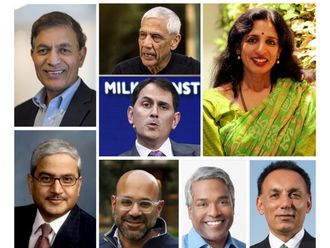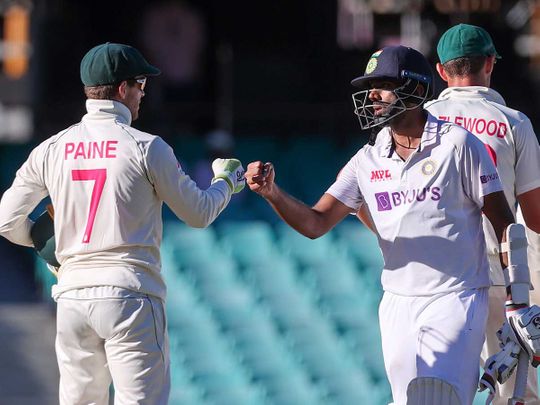
The Indian victory in Australia seems like poetic justice, considering what they have gone through. A crippling loss, the absence of livewire captain, a spate of injuries that robbed them of frontline bowlers, racist taunts from the crowd and vicious sledging from the opponents. All these seem more like ingredients for a soap opera rather a five-day game of Test cricket.
A series in Australia is always a test of skill and character. The bouncy pitches and pace like fire makes for a searching examination of a batsman’s technique. The boisterous crowd and aggressive rivals test the nerves of even the most experienced players.
What the Indians endured this series was unprecedented. Still smarting from the loss of the 2018-19 home series against India, Australians badly wanted to regain the Border-Gavaskar. Captain Tim Paine would let nothing stand between the Australians and victory. He didn’t want to suffer another loss at home. Not to the Indians.
When victory alone matters, the methods employed at times are questionable. Cricketers and officials have turned a blind eye to such tactics, and that’s when a Test match like the one at Sydney happens.
Verbal assault was rife. Australian captain Tim Paine’s foul-mouthed rant against the umpires was followed by another nasty tirade against India’s Ravichandran Ashwin. It required a deluge to criticism from former players to elicit an apology from Paine.
When players are involved in unsavoury incidents, it’s hardly surprising that the crowd join in with their colourful language. At least in two venues, spectators had to be evicted after racist insults were hurled at the touring cricketers.
Cricket certainly can do without these controversies and the toxic culture. In the end, the Indians proved that victory could be achieved without nasty confrontations on the pitch.
Why I’ve stopped supporting Australia
Shyam A. Krishna, Senior Associate Editor
I used to love Australia. They were my favourite cricket team. But no longer. Tim Paine’s team, to me, is the most un-Australian team. Why? Their cricket isn’t exciting. And Paine and his merry band have no hesitation in resorting to unsavoury tactics to crank out a win. Such strategy belongs to the back alleys, not on a cricket pitch.
In the seventies, when my interest in cricket sprouted, the Australians were a supremely talented bunch. Faced with the prospect of losing the Ashes, Australia sacked Bill Lawry and made Ian Chappell captain. Chappell couldn’t stop England from winning the series but went on to rebuild the side that became world-beaters.
Openers Ian Redpath and Keith Stackpole were followed by Ian Chappell and his brother Greg. The middle-order was safe in the hands of Doug Walters, Ross Edwards and that marvellous fielder Paul Sheahan. Wicket-keeper Rodney Marsh came ahead of bowlers Dennis Lillee, Bob Massie, Garth McKenzie, Ashley Mallet, Kerry O’Keeffe and others. Jeff Thomson, Max Walker, Gary Gilmour and Rick McCoosker joined in the following years. They were a superbly talented bunch.
Chappell’s Ugly Australians
Chappell was a very aggressive captain. His aggression rubbed off on his teammates, and along with it came the moniker The Ugly Australians. Chappell didn’t want his players to be “nice blokes on the field”, and sledging (remarks aimed to unsettle a batsman) became an established practice. Chappell was unapologetic, and the Australian performances erased any unease. All the bitter fight were left at the ground and rival players shared drinks at the end of the day.
Sir Garfield Sobers, leading the Rest of the World XI in 1971, has fond memories of his chats with Chappell in the Australian dressing room at the end of the day’s play. A chastened young Dennis Lillee, whose bowling was put to sword by Sobers, was only quick to appreciate one of the finest knocks in cricket, when the West Indian struck 254 in Melbourne. It just goes to on illustrate that there was no bad blood. All the battles were left on the pitch. And that’s how it should be.
Over the years, the Australians continued to produce some of the best cricketers. And they played their cricket hard: No quarters given, none asked. Sledging became ingrained in the Australian game. The crude remarks sometimes bordered on vulgarity. Other teams too borrowed the tactic and sledging became abominable, with frequent references to race, body shape and legality of parents’ marriage.
Sledging continued to be tolerated as batsmen ceased to be unnerved by verbal assaults. Occasionally, players have been penalised for unsportsmanlike conduct. But Australian sledging was on a different league. And Paine is the torch-bearer of the win-at-all-costs tradition.
The Paine-Ashwin chatter
The Australian captain’s sledging and profanity-laced outburst against umpires in the Test series against India seem to defy all notions of decency. Some cricket pundits say Paine’s apology to Ravichandran Ashwin’s was more ludicrous than his onfield tirade against the Indian offspinner in the Sydney Test. It was not surprising when he dropped a catch (one of his three spills) soon. Little did Paine realise that his concentration too falters when he’s focused on riling the rival batsmen.
The Australian captain’s tactics are a poor reflection on his bowlers. Mitchell Starc, Pat Cummins and Josh Hazlewood are such high calibre pacemen that they could prise out batsmen without engaging in verbal duels. The tenacious partnership between Ashwin and Hanuma Vihari fetched India a draw at Sydney. If Paine had kept his mouth shut, he could have taken the catch that would have put Australia on the path to victory.
It’s difficult to believe that Paine was tasked with repairing Australian cricket’s image, which was sullied by the Sandpapergate in South Africa. Sandpapergate was Australian cricket’s infamy in 2018 when captain Steve Smith, David Warner and Cameron Bancroft conspired to cheat by scuffing the ball to obtain reverse swing. The cricketers were banned for a year — a very light sentence given the seriousness of the offence, according to several cricket experts.
Cricket Australia (the country’s cricket body) made a conscious effort to change Australian cricket’s image in the eyes of the world. Smith and Darren Lehmann were dumped. Paine was made captain, and Justin Langer, the coach. They even have a documentary on Amazon Prime, called The Test. And now this!
What was Smith doing?
Langer has sprung to Paine’s defence. And Paine has risen to shield Smith. What exactly was Smith doing when he scrubbed out the Rishabh Pant’s guard during the drinks break. True, it didn’t alter anything, but it’s illegal to tamper the pitch as former England captain Michael Vaughn pointed out. And Smith says he’s done this routinely in the past, a claim backed by his captain. So how did he get away with violating the laws of the game?
It certainly left a bad aftertaste. Especially since the man in question had a role in a cheating attempt. The Newlands episode is still fresh. Smith should know. So anything he does would be seen in that context. There will be an element of suspicion.
Australia could do without these distractions. Langer should read the riot act, or all the work he’s done over the last few years will lay waste. Paine’s not a leader of men. Actions, not words, define leadership. Tactics, not tantrums, make for a good captain. Paine could well take a leaf out of former Australian captain Steve Waugh’s book.
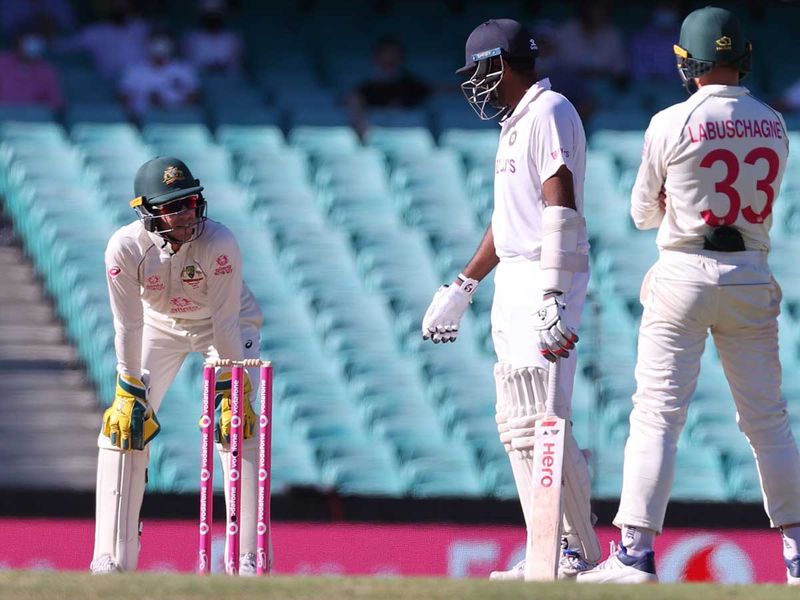
Australian cricket never benefited from sledging
Gautam Bhattacharyya, Senior Associate Editor
The captain is expected to uphold the highest standards, through his actions and restraint even under extreme pressure. I failed to do this 40 years ago and I urge you to bear this in mind for the future.
— Greg Chappell, former Australian captain
In an open letter to the Australian Test captain Tim Paine, published in Sydney Morning Herald during the Brisbane Test, Greg Chappell, the former Australian captain and one of the institutions of the game Down Under — had urged restraint from their man on the hot seat.
Chappell, much vilified for his methods as the coach of a star-studded Indian team which boasted of the ‘Fab Five,’ is not known to be a great friend of Indian cricket since his unpleasant exit after the 2007 World Cup. Hence, it’s fair to assume that at 72, it was perhaps a sense of guilt from the infamous underarm bowling incident which drove him to clear the air 40 years later and channel his thoughts for the next generation.
Paine and Justin Langer were appointed as replacements for Steve Smith and Darren Lehmann following the Sandpapergate scandal in 2018 as Cricket Australia sought an image makeover. It seemed to have worked well for some time — including the last Ashes Series in 2019 — till the old malaise returned in the third Test against India in Sydney. That’s when the Australian skipper started to wind up Ravi Ashwin when the Indian spinner was trying to save the game with a dour stand with Hanuma Vihari.
In the same Test, Smith used his spikes to erase Rishabh Pant’s leg stump guard during a drinks break — an act widely criticised by the media and former Australian players. It was an amateurish prank coming from a former skipper who had suffered for his impropriety.
A few of the fielders (read: Marnus Labuschagne) tried to needle some of the Indian batsmen, including young opener Shubhman Gill — but these could be seen as ploys to irritate the Indian batsmen.
Interestingly enough, such instances sparked outrage even from the Australian fans themselves — forcing Paine to apologise soon after the Test match.
Chappell’s letter addresses such behaviour in his letter: ‘’Some by-play and backchat has always been part of the game, but one thing that has increased in the modern era is the targeting of select opposition players for constant chatter or banter.’’
“Abuse is not acceptable in any workplace and talk, in my opinion, is cheap. It does not show one’s strength. Rather, it displays a weakness of character.
“I urge you to impress on the team to let the bat and ball do the talking and set better examples to millions of impressionable little boys and girls, lest they start imitating the worst instincts and actions of their sporting heroes,’’ he reasoned.
What research says
Maybe, the younger brother of Ian Chappell has realised the futility of such an exercise –— for the birth of ‘sledging’ as it came to be known later — was institutionalised during Ian’s captaincy. The Australian team under him were an awesome cricket force till Kerry Packer’s big bucks lured them, but their notoriety continued to spread through the years.
Have the genesis of the ‘Ugly Aussies’ persona, which has been the subject of extensive research, actually, helped them win a greater share of matches? Interestingly, that’s not quite the story.
A recent study shows that Australia were still as great in this nice-guy era. Until 1970, they won 46% of their Tests, followed by England on 38% and West Indies on 33%. Australia had produced the game’s greatest Sir Don Bradman and dominated the Ashes over the decades. There was no talk of mental disintegration back then; the word ‘sledge’ barely existed, and yet they were still easily the best Test nation.
In the 50 odd years since then, Australia have won 47% of their Tests with only South Africa marginally higher at 49%. Pakistan are way back in third place on 35%. While South Africa have won a slightly higher percentage of Tests, they have not had a reign as dominant as Australia’s, neither have they won a single ICC event.
On the other hand, Australia has five World Cups to show and if they are recognised as the greatest cricket nation in modern cricket — it has been a reward for their cricketing system, not courtesy the art of intimidation.
Australian cricketers have never been better because they’ve sledged; they were just better, and because of that, they sledged.
However, with the gulf in standards between Australia and other teams narrowing, their misplaced attempts at sledging have begun to look a poor imitation of the days of the Chappells or Dennis Lillees.
To fall back to the words of Greg Chappell, maybe it’s time for their bat and ball to do all the talking!
A timeline of shame and controversy
Compiled by Gautam Bhattacharyya, Senior Associate Editor, and Devadasan, K.P., Photo Editor
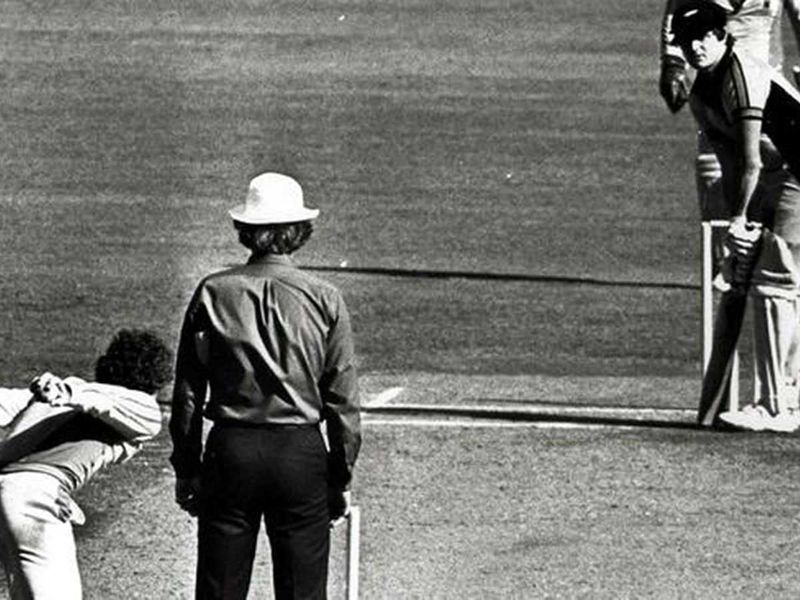
February 1, 1981: The underarm delivery
Australia vs New Zealand, World Series Cup: Greg Chappell, then Australia’s captain, asked his brother Trevor to roll the last ball along the ground so that Brian McKechnie couldn’t score the six runs needed for New Zealand to win. Richie Benaud called the incident during the ODI tri-series final: “one of the worst things I have ever seen done on a cricket field.’’
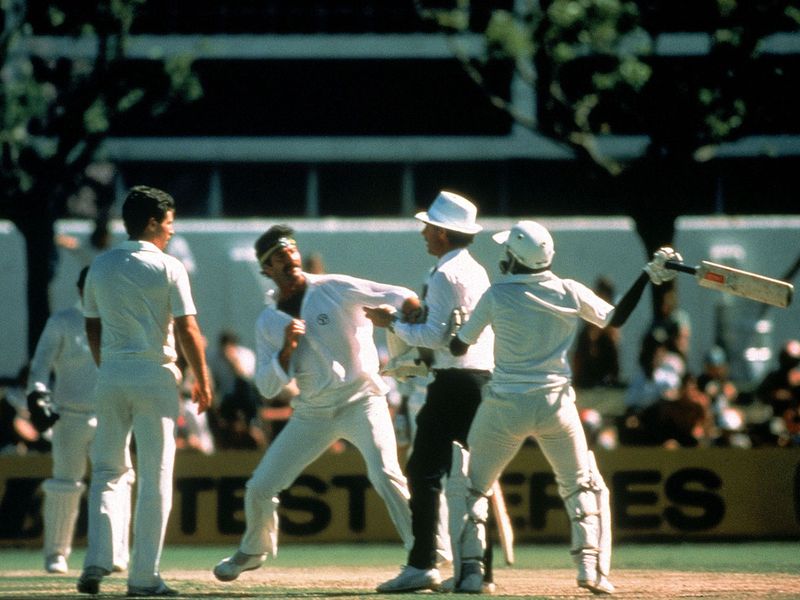
November 1981: Javed Miandad-Dennis Lillee spat
Australian pace bowler Dennis Lillee and Pakistan batsman Javed Miandad were involved in a scuffle which is one of the most undignified incidents in Test history. The two had exchanged words in the wake of Lillee obstructing Miandad while he attempted a run. The faceoff, thankfully, did not translate into physical violence

April 21, 1995: Ambrose loses his cool
Australia vs West Indies, Third Test: Curtly Ambrose, the West Indies speedster, and Steve Waugh had a serious confrontation after the Australian swore at him in Trinidad.
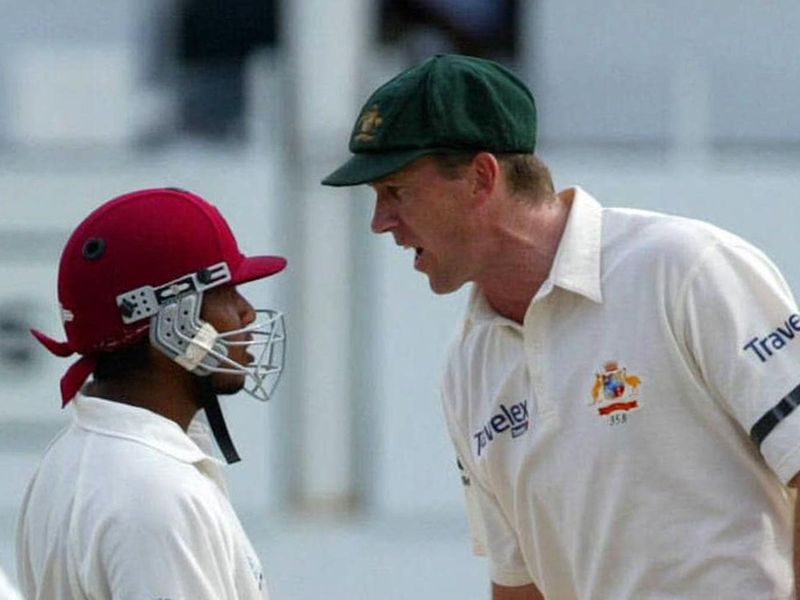
May 12, 2003: McGrath under the scanner
Australia vs West Indies: The Glenn McGrath-Ramnaresh Sarwan confrontation in Antigue could have turned uglier than it was after McGrath needled Sarwan with homophobic abuse and Sarwan retaliated with a comment about McGrath’s wife.

2004 & 2009: Bails off
Two Australian players (Justin Langer and Brad Haddin, now both on the Australian coaching staff) knocked the bails off “accidentally’’ and had their teams appeal to claim wickets. Langer brushed the stumps and dislodged the bail during the Test against Sri Lanka in Colombo. He described the act unintentional and was cleared by the match referee. The Haddin incident occurred in the World Cup quarterfinal against Pakistan in Adelaide.

2013: Warner-Root bash-up
The punching of England’s Joe Root is one of the lowest points of David Warner’s career. At 2am in the Walkabout bar, an Australian-themed pub, in Birmingham, Warned is said to have punched Root who wore a green and gold coloured wig on his head and moved it to his chin. Warner was subsequently dropped from his Australia’s Champions Trophy squad.
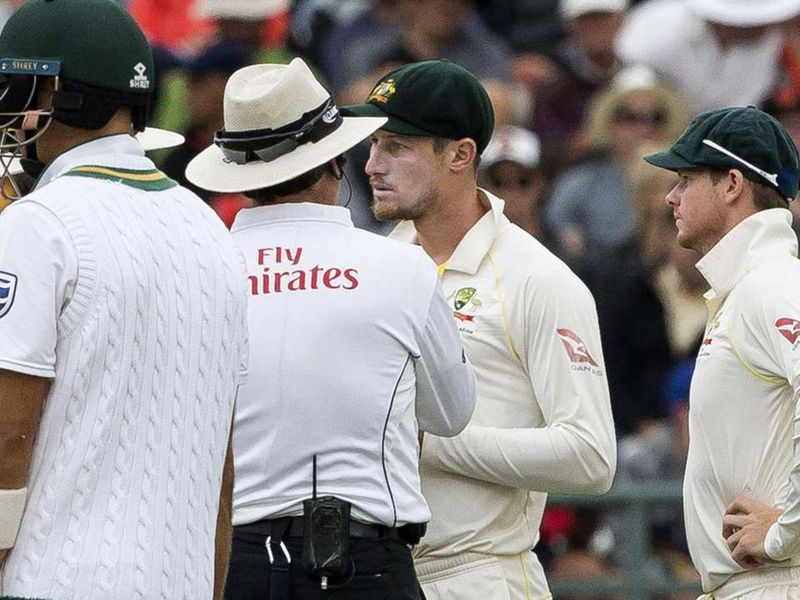
2018: Sandpapergate
This is the biggest scandal to have rocked Australian cricket in recent times. Steve Smith, the then skipper and his deputy David Warner, along with opener Cameron Bancroft admitted to using sandpaper to rough up the ball to help derive reverse swing in the game against South Africa at Newlands. The trio was banned for a year as coach Darren Lehmann also resigned from his position.




